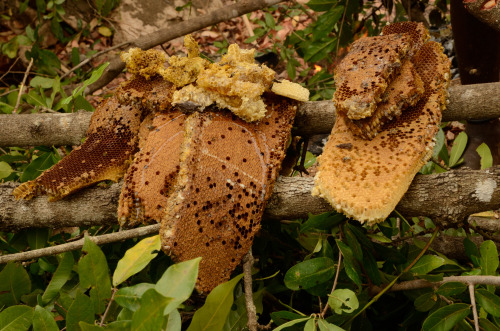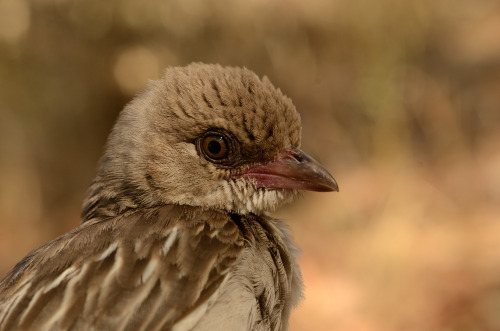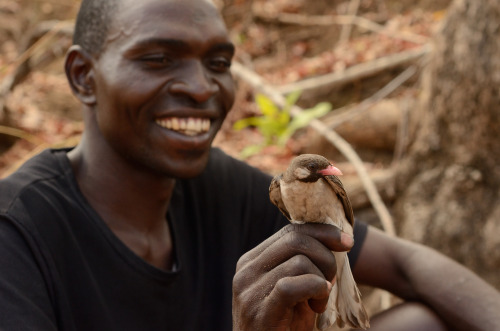#university of cambridge
Color-changing magnifying glass gives clear view of infrared light
Detecting light beyond the visible red range of our eyes is hard to do, because infrared light carries so little energy compared to ambient heat at room temperature. This obscures infrared light unless specialized detectors are chilled to very low temperatures, which is both expensive and energy-intensive.
Now researchers led by the University of Cambridge have demonstrated a new concept in detecting infrared light, showing how to convert it into visible light, which is easily detected.
In collaboration with colleagues from the UK, Spain and Belgium, the team used a single layer of molecules to absorb the mid-infrared light inside their vibrating chemical bonds. These shaking molecules can donate their energy to visible light that they encounter, ‘upconverting’ it to emissions closer to the blue end of the spectrum, which can then be detected by modern visible-light cameras.
The results, reported in the journal Science, open up new low-cost ways to sense contaminants, track cancers, check gas mixtures, and remotely sense the outer universe.
Post link
Al 75, Cu 25 (wt%), hypoeutectic alloy
Processing: Sand cast
[…]
Sample preparation: Etched in sodium hydroxide solution
Technique: Reflected light microscopy
Length bar: 40 μm
Further information: The micrograph shows primary Al dendrite arms (white). The dendrite trunk has been intersected at an angle by the plane of polishing to give the observed morphology. Between the dendrites is the Al - CuAl2 eutectic. Initially dendrites would have formed from the liquid, the regions between the dendrite arms known as the mushy zone transforming to a eutectic solid (L to Al + CuAl2). These two phases form cooperatively as neighbouring lamellae with the lateral diffusion of material across the growing interface. The relative amounts of the two phases (Al and CuAl2 ) within the eutectic are determined by applying the Lever Rule at the eutectic temperature.
Contributor: Prof T W Clyne
Organisation: Department of Materials Science and Metallurgy, University of Cambridge
Post link
Study reveals mysterious equality with which grains pack it in
At the moment they come together, the individual grains in materials like sand and snow appear to have exactly the same probability of combining into any one of their many billions of possible arrangements, researchers have shown.
The finding, by an international team of academics at the University of Cambridge, UK, and Brandeis University in the US, appears to confirm a decades-old mathematical theory which has never been proven, but provides the basis for better understanding granular materials - one of the most industrially significant classes of material on the planet.
A granular material is anything that comprises solid particles that can be seen individually with the naked eye. Examples include sand, gravel, snow, coal, coffee, and rice.
If correct, the theory demonstrated in the new study points to a fact of remarkable - and rather mysterious - mathematical symmetry. It means, for example, that every single possible arrangement of the grains of sand within a sand dune is exactly as probable as any another.
Post link
External surface (Left) and Internal surface (Right) of blow-moulded HDPE
System: High density polyethylene (HDPE)
[…]
Processing: A ‘parison’ (tube) is continuously extruded into a mould which periodically closes together with a knife, to cut suitable lengths which are then expanded to fill the mould
Applications: Blow moulding is a continuous process used in the manufacture of bottles as well as sheets, bags, and tubes.
Sample preparation: The specimen has been sputter-coated with gold, to give a conducting surface
Technique: Scanning electron microscopy (SEM)
[…]
Further information [External surface]: The surface shows periodic ridges at right angles to the flow direction. These are indicative of flow instability and a periodic slipping of the melt at the die wall. It also shows surface scratches which are typical of polymer surfaces. Hard abrasive particles, dragged across the surface, have displaced material to form grooves and ridges.
Further information [Internal surface]: The surface shows ~5 micron periodic ridges which are indicative of flow instability and a periodic slipping of the melt at the die wall. On a finer scale are catspaws of submicron polymer, drawn up by the 'wind’ in the blowing process.
Contributor: J A Curran
Organisation: Department of Materials Science and Metallurgy, University of Cambridge
Post link

working on my dissertation!!
Working in the sun ☀️
My uni wants a portfolio of essays for this paper, so I’m polishing up a couple from term time!
Post link

08.01.19 ~ 13/150 Days of Productivity
Second day back at Cam & a full day of revision to be done!
Honestly finding it quite hard to focus because it’s rather monotonous, but has to be done. Getting increasingly worried for mocks as I run out of time. But we struggle through!
Listening to London Grammar while working
~Scribbles x
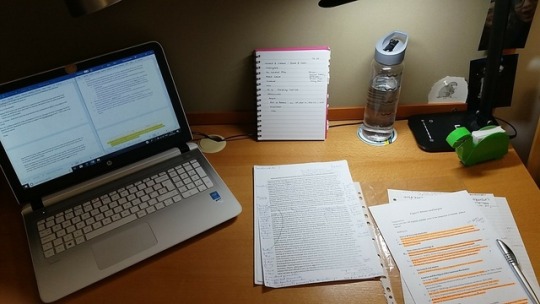
07.01.19 ~ 12/150 Days of Productivity
First day back at Cam & gonna make it productive! Mocks are on the 14th and I have a lot of work to do (and I will push myself until I do!)
Today I’m working on the British Empire during the 18th Century. What are you working on today?
~ Scribbles x

06.01.19 ~ 12/150 Days of Productivity
Hey everyone!
Moved back into uni today & now doing a little reading before people arrive!
Hope you’ve had a productive day.
~ Scribbles x
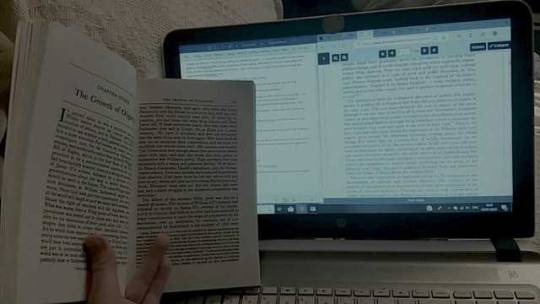
04.01.19 ~ 10/150 Days of Productivity
Trying to revise & plan a holiday is impossible & stressful I don’t recommend.
Finished a book on the growth of stability by our main man Plumb. Need to do a lot tomorrow to catch up though (plus pack to go back to Cam!).
I’ll see ya’ll tomorrow!
~Scribbles x

03.01.19 ~ 9/150 Days of Productivity
Hello again,
Had another really full day (seeing my best friend before i leave again). Gonna get about 2 hours of work done before bed now!
Going back to Cam in 3 days and I’m not ready to say goodbye to home
**
Thing that made me happy today: my friend has the entire shrek script printed on tapestry and its the best damn thing ever.
See you tomorrow!
~Scribbles x

02.01.19 ~ 8/150 Days of Productivity
Working late tonight after spending the day seeing friends for the last time before going back to Cam,and planning a holiday with them in Europe
Still mindlessly revising 18th Century British Politics. Hopefully soon my posts will diversify and I will end this monotonous regularity.
I have decided to end my posts with one thing that made my smile (trying to up my positivity because last year was not Great). Today, seeing 3 of my friends just in general made me unbelievably happy. What’s made you smile today?
Hope you’re having a good new year!
See ya tomorrow
~Scribbles x

01.01.19 ~ 7/150 Days of Productivity
Starting the New Year right with some revision!
Forgot to post yesterday because of new years plans (although I did actually do work, be proud!!!)
I hope you all had a good New Years Eve but if you didn’t, just remember that every stroke of midnight brings a new beginning!
Pictured: More 18th Century British Politics with a side of notes on the Bandung Conference (1955).
See you tomorrow!
~Scribbles x


Fitzwilliam Museum by fieldnotesbyfi.
So it was Cambridge Results Day (for undergraduate applications) today/yesterday, depending on where you are.
I just want to say, to all of those who applied and didn’t get in, it’s okay. You’re probably feeling an immense sense of loss at the moment. It’s fine. Let it all out. Cry it out. You’ve tried your best.
When you’re ready continue reading.
Because Cambridge isn’t everything. Yes, it took a lot of time, a lot of pain and a lot of effort to apply, and being rejected sucks. It sucks a lot. But remember, Cambridge is just one university amongst literally thousands.
Your undergraduate university doesn’t determine your standing in life - the degree you get from it does. Getting an upper second, or first honours degree at a decent university is enough to get you going in a decent job industry. And once you get that degree, you can try again for Cambridge in postgraduate. And again. And again. Heck, you can even try applying every single year if you want. The worst thing they can do is reject you, and you’ve already been through that.
So for the moment, cry it all out. Talk to a friend, talk to a family member, or a teacher you trust. Especially teachers, who have been dealing with this for years. But always remember, this isn’t the end. This is the beginning, and you’ve done well to come so far. And remember, there are endless possibilities out there.
Someone who came from a decent university ended up teaching in Cambridge. Remember that.
So don’t give up. Never give up and keep your eyes on the goal.
And besides, you can live out your dark academia dreams in other universities.
For those who got into Cambridge, however, congratulations! You deserved it equally and you deserve to celebrate your success. But please honour your offer and don’t go partying outside and spreading covid.
I wish everyone success in their university application cycle this year - it’s tough, but we’ll get there. And we willsucceed.
one of the hardest things about academia, for myself at least, is not putting yourself down. sometimes the only thing that’s preventing me is the fear that i’m not good enough.
One of the best thing that ever exist is friendship. I don’t know how this world will operate without kindness and love from someone you’re not intimately attracted with but unconditionally in love. Things might have been different but it’s not that you can predicts things. Destiny is still the ruler. I love how it always portray that scientists do not believe in God because that’s the beauty of diversity in cultures and belief, the beauty of respect and acceptance and the beauty of living in this world. Ramanujan must have been given a talent and intelligence that anyone could think impossible but because he believed on what he’s believing, he pursued his own dreams and did whatever it takes to share his part. Mr. Hardy and Littlewood are our great friends who just made me cry, made number 1729 meaningful than I could ever imagined. The wife and the mother who patiently waited for him. This film, though didn’t cater how every equations went. I just want to say that it is for the good of all, jk. Because even if they’ll tell it to us we won’t understand haha. Math complicate matters but it’s helpful to those who want to learn.
The Man Who Knew Infinity (2013)


Firstly, I hate science. I came to watch this because of the romance I’m spoiled a long time ago with no proper clearance of their backstory. I am devastated. This made me think of what I’m doing today that I will probably regret later or tomorrow. Imagine of those possibilities if she didn’t interfere to his life, would he still be as great as his legacy today? Or would he still pursue his dreams but not with her? There are millions or even billions of scenario that could come up with a different result but with much and overflowing understanding they still came to a conclusion where they chose different paths because they got tired and lost. They remained friends but I’m still in awe of how things turned out, on how fate beautifully pushed and pulled them apart.
The Theory of Everything (2014)









Chemical Engineering, University of Cambridge
Theoretical Aspects of Paste Formulation for Extrusion
Are birds man’s best friend?
They say dog is man’s best friend, but would you believe a bird could assume the title of ‘loyal companion’?
A certain type of bird is earning the title in and amongst parts of Africa. A wax-eating bird called the greater honeyguide works together with people to find wild bees’ nest. This relationship is vital between human and bird because it provides a valuable resource to both. It’s also the first time this kind of ‘human-bird’ relationship has been described.
During the honey hunting season, Honeyguides give a special call to attract people’s attention, then fly from tree to tree to indicate the direction of a bees’ nest. Local honey hunters follow the birds, subdue the stinging bees with smoke and chop open their nest. The end result provides wax to both the honeyguide and humans.
Image credit: Dr Claire Spottiswoode/University of Cambridge
Post link


![Al 75, Cu 25 (wt%), hypoeutectic alloy Processing: Sand cast[…]Sample preparation: Etched in Al 75, Cu 25 (wt%), hypoeutectic alloy Processing: Sand cast[…]Sample preparation: Etched in](https://64.media.tumblr.com/79ecb73957bcb39176b5d6c751534161/tumblr_ovkv9cYTp91u00si6o1_500.jpg)




